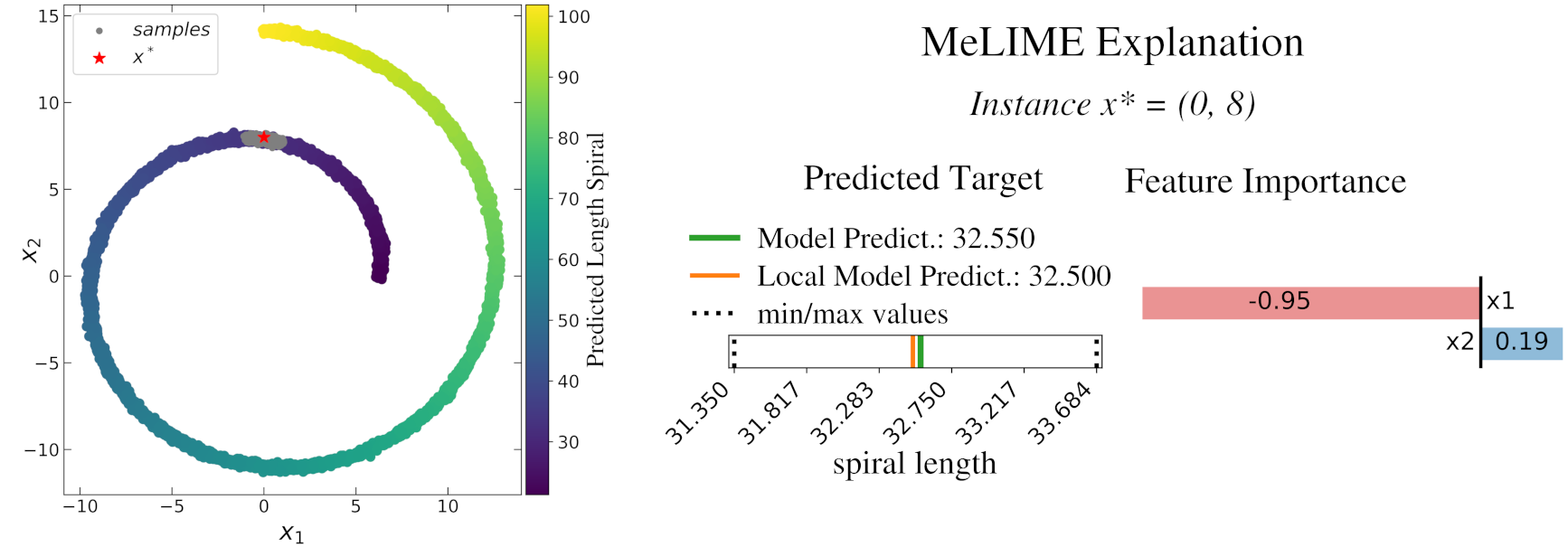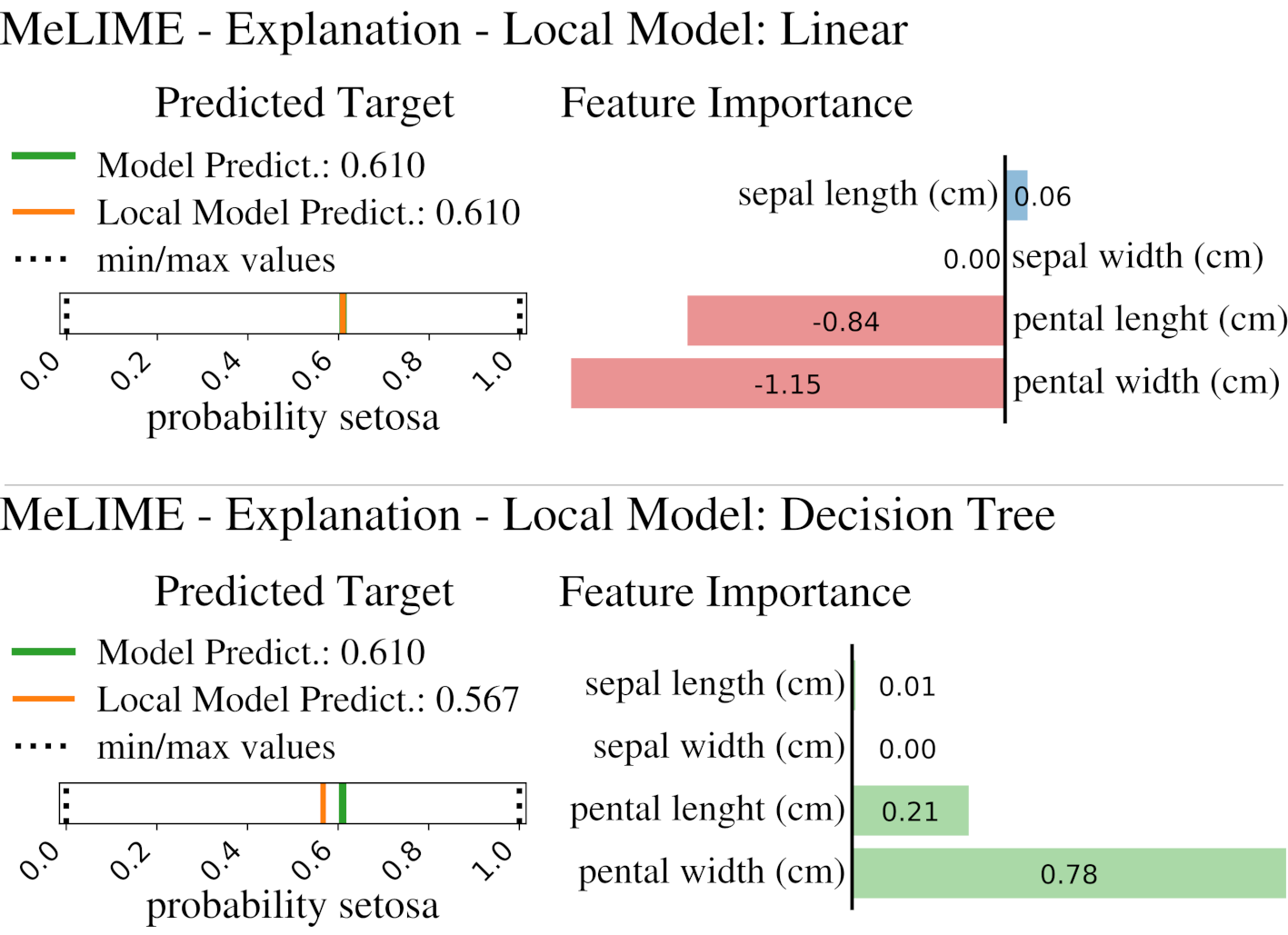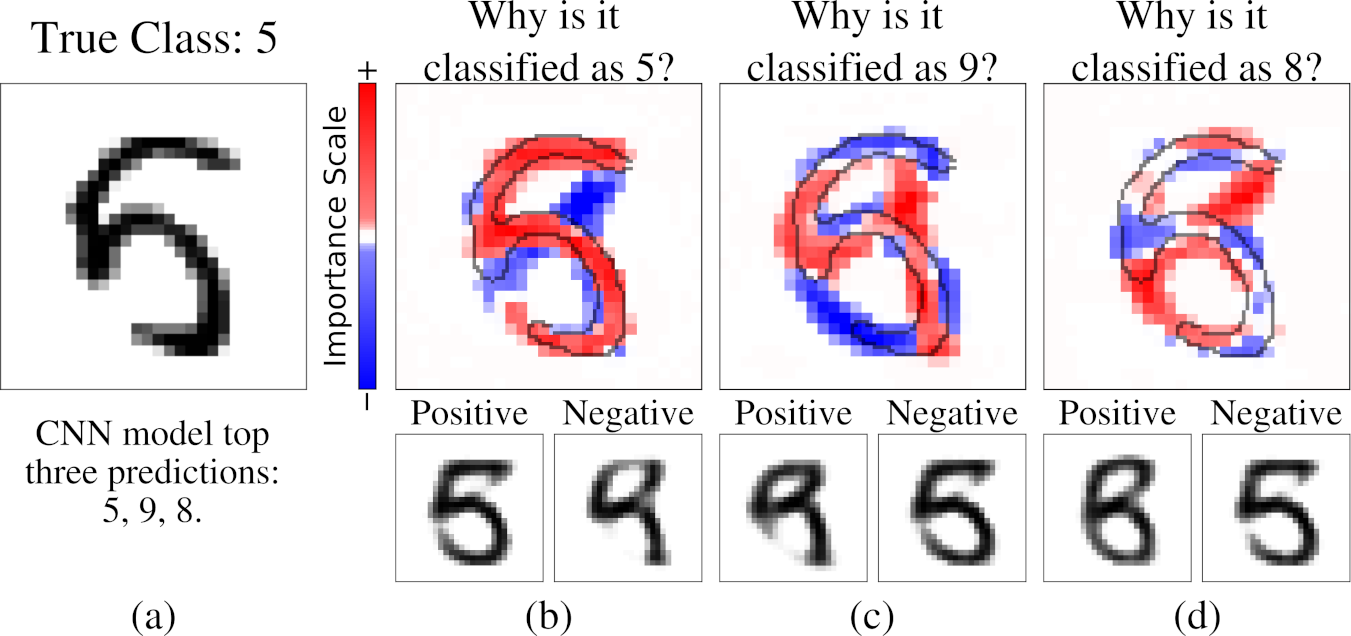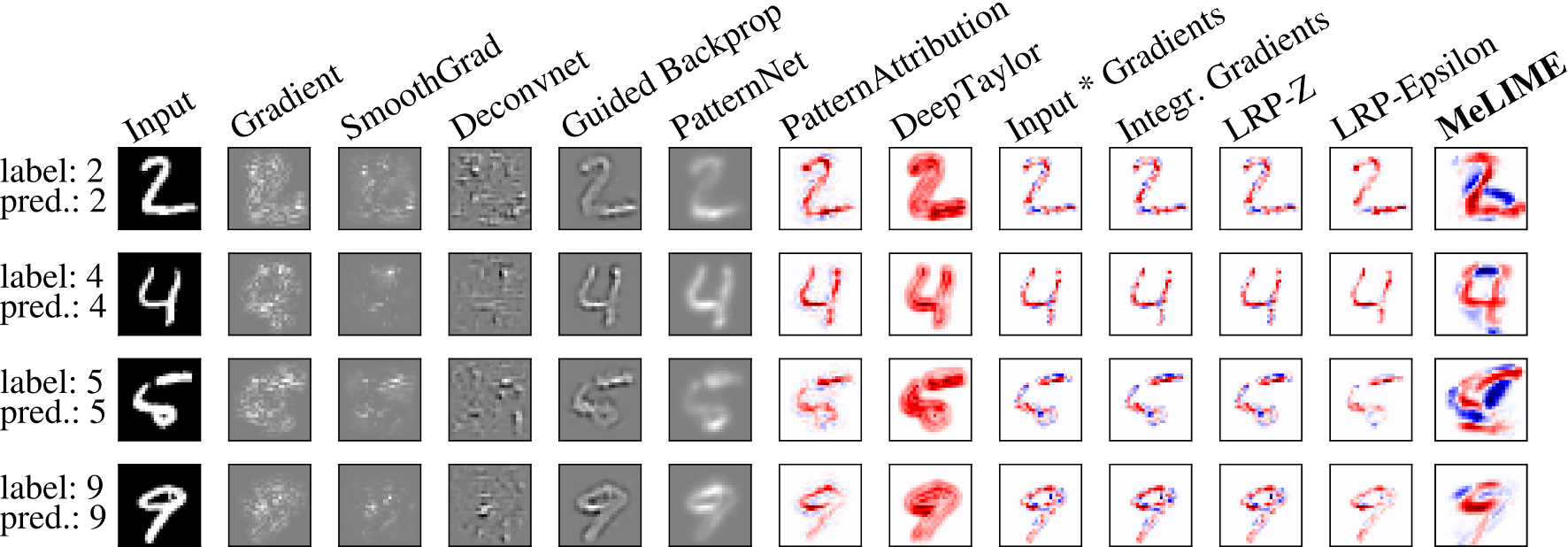In this project, we introduce strategies to improve local explanations taking into account the distribution of the data (on the manifold) used to train the black-box models. MeLIME, produces more meaningful explanations compared to other techniques over different ML models, operating on various types of data. MeLIME generalizes the LIME (https://github.com/marcotcr/lime) method, allowing more flexible perturbation sampling and the use of different local interpretable models. Additionally, we introduce modifications to standard training algorithms of local interpretable models fostering more robust explanations, even allowing the production of counterfactual examples.
The preprint of the paper is available on https://arxiv.org/abs/2009.05818
MeLIME can be applied to any ML model. You can generate explanations using different local interpretable models:
- Linear Model;
- Decision tree;
- Basic Statistical Measurements.
You can also easily implement your own.
To create the meaningful feature space for your ML model, it is available four strategies:
- KDEGen: a kernel density estimator (KDE);
- KDEPACGen: KDE with a PCA transformation;
- VAEGen: a Variational Auto Encoder;
- Word2VecGen: where a word2vec is used to represent tokens.
Again, you can implement your generator as well.
git clone https://github.com/tiagobotari/melime.git
cd melime
python3.7 -m venv venv
source venv/bin/activate
python setup.py install
The examples are on experiments folder and can be run using jupyter notebook.
pip install jupyter
jupyter notebook
then open one of the experiment files.
Data generated from a toy model- Length of Spiral. The color scale corresponds to the predictedvalues of a MPL model. The red star represents a data point , and the gray points the sampled data from KDEGen.Explanations produced for an instance
using MeLIME methodology with KDEGen and a linear model as local model.
Go to this example.
Local explanation for an instance produced by an RF model trained on the Iris dataset. MeLIME using KDEPCAGen and a linear model as local model; MeLIME using KDEPCAGen and a decision tree as local model.
Go to this example.
MeLIME local explanations produced for a CNN model trained over the MNIST dataset. An image (numberfive) and the produced explanations with counterfactual examples for the top three predictions: (a) original image; (b) number five; (c) number nine; and (d) number eight.
Go to this example.
A local explanation was produced using MeLIME for a Naive Bayes classifier model trained on sentences frommovie-reviews of the Rotten Tomatoes website (Website; Pang and Lee 2005). Words/positions showed as reddish color, if changed, are likely to turn the sentence negative while bluish color to become the sentence positive.
Table: The original phrase to be explained; Favorable and unfavorable phrases are gener-ated for predicting the sentence as positive.
Go to this example.
MeLIME comparation with other methodologies for a CNN model trained on MNIST dataset:
The experiment in the file melime/experiments/ex_mnist_cnn_innvestigate.py needs the innvestigate framework.
To install it, run the following command:
> git submodule update --initThis will download the module to the directory submodules/innvestigate.
For running this specific experiment, you may need to install tensorflow 1.15 and keras 2.3.1:
pip install tensorflow==1.15
pip install keras==2.3.1
Afterwards, the script can be run from the root directory:
> python melime/experiments/ex_mnist_cnn_innvestigate.pyThis will plot the result using matplotlib.
If you want to output a pdf, then prepend the command as follows:
> PLOTFILENAME="output.pdf" python melime/experiments/ex_mnist_cnn_innvestigate.pyT.B. acknowledges support by Grants 2017/06161-7 and 2019/26617-0, São Paulo Research Foundation (FAPESP).





